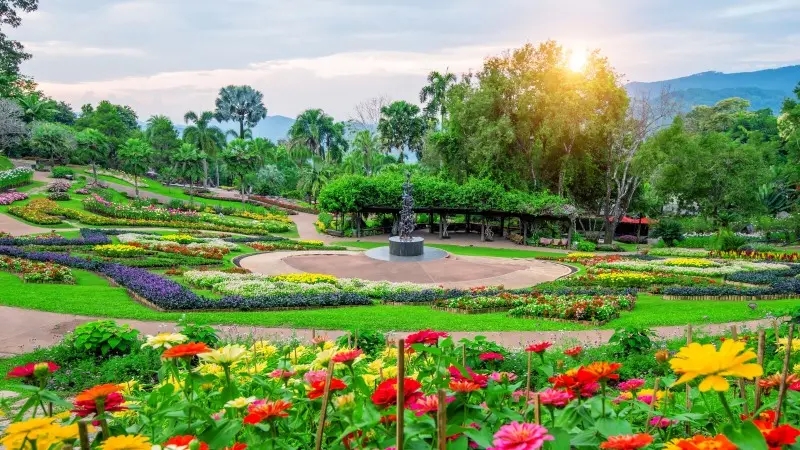Located in the city of Bogor, approximately 60 kilometers south of Jakarta, the Bogor Botanical Gardens represent a magnificent blend of natural beauty, scientific research, and historical significance.
Spanning over 87 hectares, these gardens are not only a major tourist attraction but also an important center for botanical study and conservation in Indonesia.
Historical Background
Established in 1817 during the Dutch colonial era by the government’s chief scientist, Casper Georg Carl Reinwardt, the Wisata Bogor Lagi Hits Botanical Gardens have a rich history.
Originally designed as a research facility, the gardens have evolved into a significant center for botanical research and education, housing a vast collection of plant species from Indonesia and around the world.
The Flora of the Gardens
The Bogor Botanical Gardens boast a collection of more than 15,000 species of trees and plants. This collection includes a wide range of tropical rainforest plants, medicinal plants, orchids, and palms. One of the highlights is the Rafflesia arnoldii – the world’s largest flower, known for its size and unique odor.
Research and Conservation Efforts
The gardens serve as a center for botanical research and conservation. Researchers from across the globe study the diverse flora, contributing to our understanding of plant biology, ecology, and conservation. The gardens also play a crucial role in conserving rare and endangered plant species.
The Orchid House and Herbarium
The Orchid House is a popular attraction, showcasing a stunning array of orchids in various shapes and colors. Additionally, the gardens house an extensive herbarium, containing a vast collection of preserved plant specimens used for scientific study and reference.
Historical Buildings and Monuments
Within the gardens are several historical buildings and monuments, including the Bogor Palace, which serves as one of the Indonesian president’s official residences. Visitors can also see the Lady Raffles Memorial Monument, dedicated to the wife of Sir Stamford Raffles, a former British leader of the island.
Educational and Recreational Activities
The gardens are not just a place for scientific study; they offer numerous recreational activities. Visitors can enjoy leisurely walks along the beautifully landscaped paths, picnics, and boat rides on the garden’s lake.
Educational programs and guided tours are available, providing insights into the importance of plant biodiversity and conservation.
The Gardens’ Ecosystem and Wildlife
Apart from its plant life, the Bogor Botanical Gardens are home to a variety of wildlife, including birds, bats, and several species of mammals and reptiles, making it a perfect spot for nature enthusiasts and wildlife photographers.
Visiting the Bogor Botanical Gardens
The gardens are open to the public year-round such Tempat Wisata di Sumedang and offer a refreshing escape from the hustle and bustle of Jakarta. The best time to visit is during the dry season, from June to September, when the weather is most conducive for exploring the outdoors.
Conclusion
The Bogor Botanical Gardens are more than just a scenic destination; they are a living library of Indonesia’s rich plant biodiversity and a testament to the country’s commitment to environmental conservation.
For anyone visiting Jakarta or West Java, a trip to these historic and scientifically significant gardens is an enriching experience, offering a serene and educational retreat into nature’s wonders.
